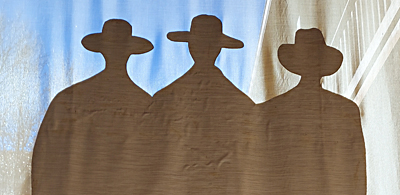Art in Action: El Salvador
The International Center of Photography in New York is hosting an exhibition of wartime photographs titled: El Salvador: Work of Thirty Photographers. This important exhibit details the bloody US backed counterinsurgency war that ravaged the Central American nation, with the photos documenting the period from 1979 to 1983.
Organized more than twenty years ago by photographers Susan Meiselas and Henry Mattison, the show features works by more than two dozen photographers, including John Hoagland, Eli Reed, Eugene Richards, and James Nachtwey. A number of the photos are startling in the extreme, shocking viewers with explicit depictions of the war’s savage brutality. Many American artists played a pivotal role in voicing opposition to the war, including the aforementioned photographers.
In 1979 an army coup d’etat brought a vicious military junta to power in El Salvador. During the decade that followed, Salvadoran government forces fought a communist insurgency. Death squads allied with the government tortured and murdered some 70,000 civilians, which included the assassination of Archbishop Oscar Arnulfo Romero and the killing of four US churchwomen in 1980.
While the Reagan administration supported the Salvadoran government with direct economic and military aid throughout the 1980’s, millions of Americans were in active opposition to the war.
In 1983, El Salvador: Work of Thirty Photographers, was released as an influential book that included text by poet Carolyn Forché and a detailed history of the conflict. In 1984 the photographs were first exhibited at the ICP gallery as the bloodletting in El Salvador continued to spiral out of control.
At the time, ICP founder Cornell Capa said, “The photographs of El Salvador: Work of Thirty Photographers are urgent eyewitnesses to a civil war occurring practically in our backyard. They were taken by thirty photojournalists who put their lives on the line to fulfill their assignments. Some left them there. These photographs, charged with horror and emotion, are a visual plea to stop the bloodshed and inhumanity.”
In 1979 protestors in El Salvador called for the release of political prisoners when they occupied the Metropolitan Cathedral in the nation’s capital of San Salvador. The government response was horrifying; police fired upon those gathered on the cathedral steps, slaying twenty-three and wounding seventy others.
Film of the bloodbath was immediately broadcast worldwide on television news, and as I watched the massacre on my television screen I knew my life was going to change. For the next decade or so, much of my artwork would focus on the war, poverty and misery that wracked not just El Salvador, but the rest of Central America as well.

As war refugees from the region poured into my city of Los Angeles, I was in a unique position as an artist. I listened to and learned from these victims of war, translating their desperate tales into works of art.
My paintings, drawings and prints were then used to bring further attention to the life and death struggles taking place in El Salvador and throughout the region.
It is for that reason that I feel affinity for the photographers who worked on raising public awareness about the wars in Central America. El Salvador: Work of Thirty Photographers, is a must see exhibit of great consequence, especially in these days of endless war. The International Center of Photography is located at 1133 Avenue of the Americas at 43rd Street in NYC. The exhibit runs from September until November 27th, 2005. For more information, visit the ICP website: www.icp.org


